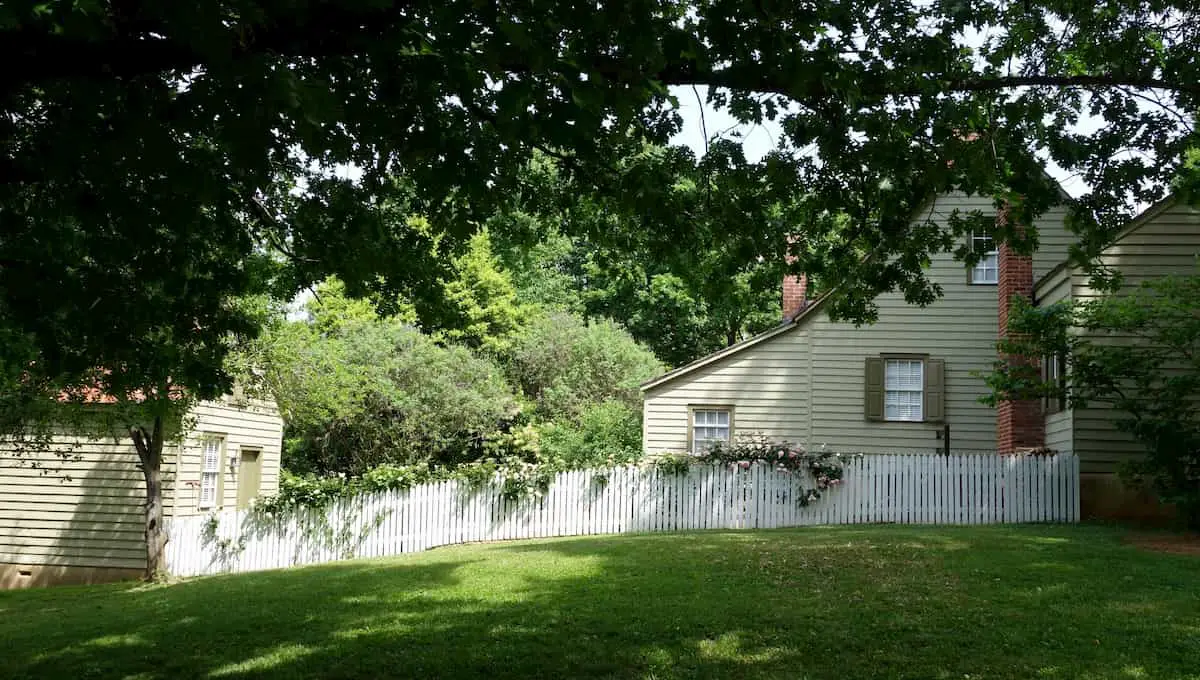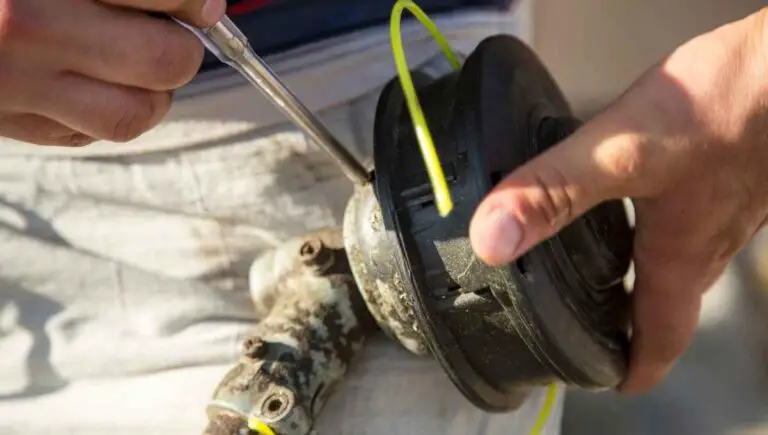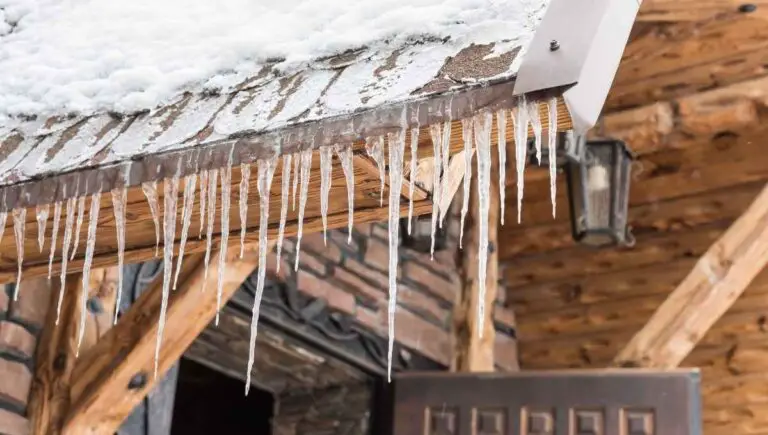How to Block Water Drainage From a Neighbor’s Yard

Dealing with water runoff from your neighbor’s yard can be frustrating. In most cases, the frustrating part is that your neighbor may be responsible for the damages on your property. This is what happens when you live in close proximity to other people. In that case, you will need to learn some tips on how to block water drainage from a neighbor’s yard.
How do you block water drainage from your neighbor’s yard? To prevent water runoff that could damage your property, you need to provide a diversion for the flowing water. Additionally, you’ll need to slow down the water flow coming into your yard so that the water will eventually percolate into the soil.
Stopping water from flooding your area requires hard work and it can get quite costly too. However, it is not an impossible task. In this article, we will be discussing different solutions to runoff problems, including manual labor, installation of drains, and even seeking legal advice.
Here’s a Quick Pro Tip!
One quick, easy, and affordable way to combat water drain off from a neighbors yard is to lay down potting soil and mulch. Soil has an amazing absorption power and can soak up a lot of the water run-off.
Compressed Organic Potting-Soil over at Amazon expands up to 4 times when mixed with water and will work great for catching and absorbing water drainage from your neighbors.
Legal Disclaimer: The information contained in this article is provided for informational purposes only, and should not be interpreted as legal advice or acted upon as such. You should always consult with an attorney or legal professional before taking any action.
Who Is Responsible For Land Drainage?
Before looking for the best solution to water runoff, there is a need to understand who should be held accountable for one’s land? It may be a complex subject but the bottom line is: the landowners should be responsible for the drainage in their property.
This, however, will still depend on the situation, such as how the flood was caused. Whether it is caused by natural conditions such as rain or a fault in landscape design, it is important to know who should bear the responsibilities and pay for runoff damages.
Who Is Responsible For Rainwater Runoff
When it comes to stormwater from a neighbors property, you’d have to wonder who takes responsibility for the damages. In general, your neighbor will not be held liable for flood damages to your property when they are caused by rain or natural land conditions.
Property Alteration and Carelessness
In instances where your neighbor altered their property by landscaping, and this results in more unnatural water runoff, then your neighbor should pay for damages. At the same time, if your neighbor has been careless or negligent and caused damages to your property, you may ask for compensation for the damages.
Negligence, in this case, includes gutter water from neighbors resulting from clogged gutters, broken water hoses, and broken water pipes that are intentionally ignored.
So, if you’re constantly thinking about “my neighbors sprinklers flooding my yard again!” just remember you will prevail. You can talk to your neighbor and work out an agreement of compensation.
How Do I Keep Neighbors Water Out Of My Yard
You might be thinking now, what if my neighbor’s yard is higher than mine? Is there anything I can do?
Yes, there are steps you can take to solve this problem. Continuous flooding caused by water runoff from neighbor’s yard is no joke. The water will eventually ruin your lawn, so to prevent that, consider one of the following options:
- Building a berm
- Installing a dry well
- Installing French drains
Building A Berm
A berm is a rounded raised barrier made using a mound of soil covered with grass and plants. It is usually accompanied with a swale when used to slow down runoff and divert water away from your property. When building a berm, you have to carefully plan the water flow; envision where you need the water to flow. In addition, you need to consider the types of vegetation to plant.
Grass is the most convenient plant to have on your berm but it becomes an additional chore considering the need to mow it regularly as it grows. A variety of plants may be a good idea. Not only hold off water from flowing to your yard but they are generally easier to maintain. In addition, they add to the landscape naturally.
Basic Rules In Building Berms
If you’re a beginner to berm building, consider the following guidelines:
- Plan carefully when building a berm, keeping in mind drainage issues. While you might be busy diverting water from your neighbor, you may have unknowingly diverted water into areas you never intended for it to go.
- If you are new to berms, start with a small-sized berm
- Slope your land gradually. This way, you’re making your berm look more natural. More importantly, gradual sloping prevents soil erosion.
- Instead of a circular shape, make your berms shaped like a crescent moon.
- Layer your berm carefully. Dirt and debris will erode during heavy rainfall. You can use topsoil as a top layer and a clay soil on the second layer. Underneath the clay layer should be fill materials to bulk up your berm.
Here are some quick tips for designing your berm:
- Edging materials like stones can help trap soil in place so it won’t wash off
- Mulching helps reduce runoff and erosion and also keeps weeds at bay.
- Plan your plants carefully. For instance, you need to put plants that can thrive in drier conditions at the top of the berm as this area tends to dry out more quickly. Plants that thrive in moisture should be placed at the bottom.
Have A Dry Well
A dry well is an underground structure that temporarily stores storm water runoff. Installing a dry well can also be one effective way to block water drainage from neighbor’s yard. This will involve hard work since there is a need to connect a pipe from the downspout all the way to the tank (made of either concrete or plastic.)
The collected storm water slowly drains out to the surrounding soil. The dry well not only catches the water from your downspout but it can also be a diversion spot for water runoff from your neighbor.
If I had a neighbor draining on my land, I believe a dry well will be an excellent solution. They can last for many years without issues. Choose a dry well that’s easy to install, has great capacity, and complies with municipal regulations. A good recommendation would be NDS Flo-Well.

The only thing you need to check is that from time to time, debris and sediments will wash off along with the runoff, which could clog the well walls. As a result, this will reduce the tank’s ability to drain the water.
French Catch Basin
Another option to remedy runoff is to intercept the water using a French drain or catch basin, which is a trench filled with gravel. A perforated pipe, like Flex Drain 52003, to be placed at the bottom is required for this setup.

This pipe will direct water-flow from a higher area to a lower area. As a result, you won’t be dealing with flood problems in your yard or have to clear up flood waters. If you want to install French drains, remember the following tips:
- Plan your digging. Having a French drain requires intensive excavation and replacing it with drainage gravel.
- Digging can be done by hand; it’s labor-intensive but it’s much cheaper. Enlist a friend to help
- Figure out where you will be putting your excavated dirt.
- Some of the useful suggestions include creating raised beds or building slopes to further protect certain areas that usually collect runoff.
- A gas-powered trenching tool can also help with this project. You can rent one if you don’t want to invest in it.
- If manual labor by hand-digging or trenching tool is not feasible for you, you can always hire a professional backhoe operator.
General Steps In Installing French Drains
Here are the basic steps in putting up a French drain:
- Call your local utility companies to mark underground utilities
- Dig the trench
- Use landscape fabric, like Dewitt, to line the trench. The fabric should have the right size, making sure that one foot of the fabric is extended past the top of your trench walls.
- Secure the excess temporarily using landscape fabric pins. You can try Homestead Choice’s 100-pc pins.
- Fill the bottom of the trench with two to three inches of gravel.
- Place the drain pipe in the trench, with the holes facing down.
- Fill the trench again with gravel, covering the drain pipe. Fill until two to three inches of the top of your trench.
- Fold the excess fabric over to cover the top of the gravel.
- Cover the area with soil. In this case, use the soil that you dug up earlier
- Reseed the area with grass
French drains not only handle water moving over the soil, as in a runoff, but also water through the soil. This makes it an ideal solution for flooded basements as well. In addition, French drain can be included in your eco-projects, if you are for the green movement. You can build the drain using eco-friendly material that fits your budget.
Don’t be intimidated with the installation of a French drain. Generally, it’s easy and it will be much easier if you get help. The only thing you need to decide on is where to put the drain.
Before Digging
Keep in mind that before you dig a trench or a hole for your French basin and dry well, always contact your utility companies to help mark existing utilities. This way, you won’t risk breaking pipes while you do some excavation in your yard.
Neighbors Water Flooding My Yard: What To Do?
Installation of structure like a French basin or dry well is a common method of blocking drainage from your neighbor’s yard. But there are steps you can take to improve your landscape, which will ultimately mitigate runoff. Below are some landscaping tips on how to stop water runoff in the yard:
- Use plants to help with water runoff. Plant any vegetation on areas where water runoff usually collects. As the water drains down the soil, plant roots will absorb them. In addition, the plants will filter out pollutants.
- Level out your yard if it’s sloping. To avoid water coming from your neighbor’s yard, it should be leveled away from your home. In this case, you need to use extra dirt so to build a slope that will direct water away from your yard. You can call a professional to help with the grading process.
- Care for the tree. Trees are valuable in your surroundings as they also help absorb and filter water runoff. This is especially true if you have bigger trees in your backyard.
- Concrete patio slabs should be replaced with bricks or pavers. This way, you can let water seep between them. A turf block or having a strip of grass just in the middle of the driveway also helps slow down runoff.
- Choose a permeable material when thinking about your patio, driveway, or path. There are affordable options if you think asphalt or concrete is too costly. You can opt for gravel, crushed shells, or mulch instead.
- A rain garden is usually planted on low areas and serves as catch basins. It is designed to slow down and catch runoff. Having a rain garden not only solves your flooding problem but it can also add aesthetics to your area. Choose a fast-draining soil to allow water to sink in. In return, this will promote a lush garden.
- Depending on the type you use, soil can act like concrete when it comes to absorbing water. If you have soil in areas where runoff usually collects, mulch it. FibreDust CoCo Mulch can be a great mulch to use to cover the ground.
Once you’ve taken any of the steps mentioned above, be sure to check on your landscape, especially during the rainy season. Natural conditions, like rain and snow can affect your landscape over time.
Can I Sue My Neighbor For Water Runoff?
While you can install structure or improve on landscaping to help with water runoff from your neighbor’s property, others turn to legal advice. Landowners who experience persistent flooding problems due to their neighbor’s actions or the lack of can seek advice from a lawyer about damages and compensation.
The lawyer will help with the investigation on the claims regarding the damage. He or she can also look into insurance policies that can minimize damages done to the property owner.
Are You In Need of Legal Advice?
DISCLAIMER: We are not a law firm and we don’t provide legal advice. Work with an attorney if you plan to take legal action against your neighbor.
It’s not easy having a neighbor who is not mindful of their actions. Have you talked to a neighbor about the water runoff? Aforementioned runoff problems, or issues like a neighbor blocked drainage ditch can be taken to the court.
Legal action is usually necessary when your neighbor hasn’t done anything to solve the water runoff despite having their attention called several times before. If you’re going this route, it’s important to talk to your neighbor first and work out an agreement.
Communication still helps and many homeowners have successfully solved a runoff problem just by talking to their neighbors and having a well-mannered approach. However, if polite requests fall on deaf ears and damages are too overwhelming, an attorney can step in to evaluate the situation.
Usually, your lawyer will assess the situation by answering the following questions:
- Were the damages caused by natural conditions like the weather or your neighbor’s natural terrain?
- Did your neighbor alter his/her adjacent landscape unreasonably, which then contribute to water runoff?
- Did your neighbor do something about his or her drainage that resulted in damage to your property without their knowledge?
These are just some of the many important questions your lawyer may consider. If you can prove that your neighbor has been negligent, you may be able to collect compensation. In most cases, your neighbor doesn’t have control over water runoff, such as stormwater, as mentioned.
How to Prove My Claims?
To prove your claims, the court will consider the following:
- Were the changes to neighbor’s property necessary?
- Was your neighbor knowledgeable of the potential negative consequences those changes can bring to your property?
- Was the property damage more substantial than the benefit those changes brought to your neighbor?
By law, property owners should protect their land from damage caused by runoff. However, if your neighbor also made changes to protect their own land from damaging runoff, but resulted to water draining on your land, you still have a chance to prevail in court. As a result, you can collect compensation for repair or medical costs (if injury resulted).
Conclusion
Nobody benefits from water runoff. Unfortunately, this is a real problem that happens, especially in neighborhoods where some people’s yards are higher than others. You can work out this issue with different methods, involving installation of structure and even proper landscaping.
Communicating with your neighbor is also necessary, especially if your neighbor caused the problem – whether intentionally or unintentionally. This way, both of you can arrive at a peaceful agreement.
In cases where communication didn’t work despite several attempts, legal action may be taken. Make sure you know your rights to protect your land as an owner. In this case, seeking an expert litigator is the best idea.







